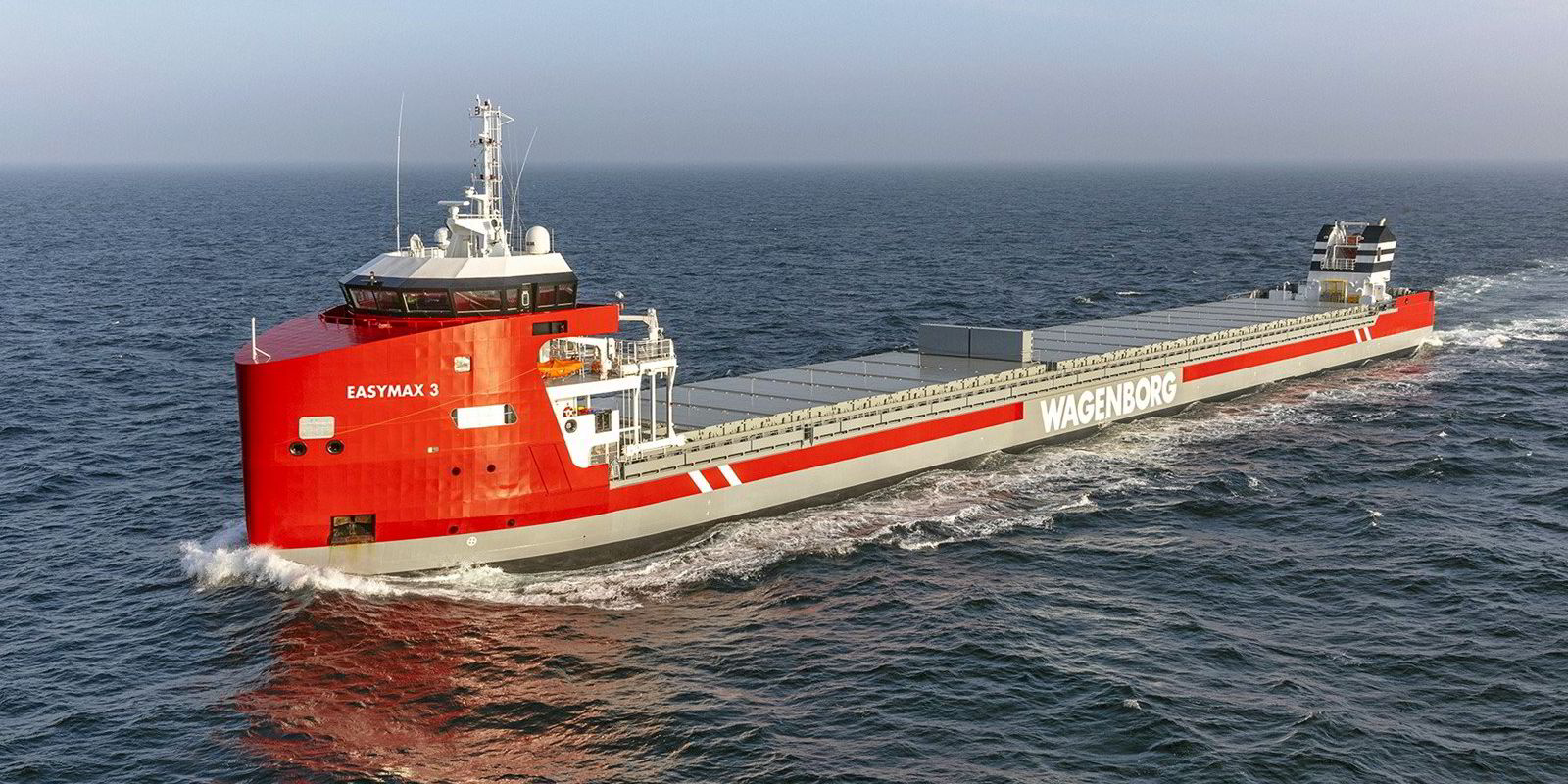An astonishing two-year rally that has lifted the multipurpose (MPP) markets to new heights is finally losing steam.
But while charter rates and secondhand values start to taper off, analysts believe the dearth of newbuilding orders bodes well for the long-term health of the sector.
Charter rates for MPP vessels appear to have plateaued after what has been an astronomical run in the 22 months since the start of the Covid-19 pandemic.
Rates for standard, 12,500-dwt MPP units trebled in the past 12 months, helped by stronger demand spilling over from the container trades.
Six-to-12 month charters for the standard F-type vessels rose 181.3% to $22,764 per day in the past year, according to the Toepfer Multipurpose Index (TMI).
The pace of that rise subsided in recent weeks and panellists expect further falls of between 2% and 12% in the next six to 12 months.
Longer-term upbeat
The shift in sentiment is registered in the Drewry Multipurpose Time Charter Index, which decreased slightly over March to $11,170 per day.
That is partly a result of the war, which saw cargoes stuck in Russian and Ukrainian ports and industrial projects on hold.
The analyst argued that the weakening trend is expected to continue due to the weakening global confidence, rising commodity prices and competing sectors.
Longer term, the perception is more upbeat.
The war in Ukraine could speed up the move away from fossil fuels.
If that happens, Toepfer argues that the MPP sector could benefit from accelerated demand for project cargo and wind turbines.
The analyst notes that smaller operators already struggle to find suitable tonnage as many ships have been fixed with forward delivery dates in the second half of the year.
At least one modern, 12,500-dwt vessel with delivery in August has been fixed for up to three years at $20,000 per day, while another obtained $25,000 per day for a 12-month period, the shipbroker noted.
Tempted to sell
The same market dynamics have lifted secondhand values.
Smaller 12,500-dwt F-type vessels have more than doubled in value over the past 12 months to around $17.5m, according to Toepfer estimates.
Demand remains strong despite the removal of a swathe of potential buyers from Russia.
Sanctions have removed names that have bought MPP tonnage in the past such as Amur Shipping, Sakhalin Shipping and Fesco.
But values remain firm, with the 10,508-dwt Granada (built 2004) selling for $13.25m and the 13,100-teu Mercury Triumph (built 2006) securing $9m.
Brokers say the good news for owners and operators is that very few MPP orders have been placed.
Last week saw Dutch owner Wagenborg Shipping ink a deal with Royal Niesten Sander Shipyard for a third, 14,000-dwt multipurpose vessel of the Easymax design.
The vessel is for delivery in the first half of 2023, and includes an option for a fourth.

But such orders by European operators remain limited in number, while Chinese yards opted to build simpler designs in other shipping markets.
The result is an ageing MPP fleet, a historically low orderbook and the need for low-emission tonnage, Toepfer argues.
It added that this will “inevitably” mean the trading fleet will not be able to meet the demands of a world that requires flexible, low-emission, self-sustained tonnage.
Dearth of orders
Only a handful of MPP operators have ordered this year, including unreported orders by German owners United Heavy Lift (UHL) and Briese Schiffahrt.
Hamburg-based UHL ordered two more 17,000-dwt MPP vessels of the F900 design at Hudong Wenchong Shipbuilding.
These are said to be costing in the region of $45m each and will add to UHL’s series of 17 vessels in operation.
Similarly, Leer-based Briese purchased another two F500-type multipurpose and heavylift units at Taizhou Sanfu Ship Engineering in March.
The vessels, which are sisters to the 12,500-dwt BBC Ukraine (built 2022), are reportedly costing close to $30m each, with delivery slated for 2023 and 2024.
Drewry notes that rates for the larger vessels have benefited from the latest port congestion in China and project carriers are still in demand to fill the supply breach.
But it added that weakening global confidence due to the war in Ukraine will balance out any potential demand improvement as a result of increased tonne miles.






